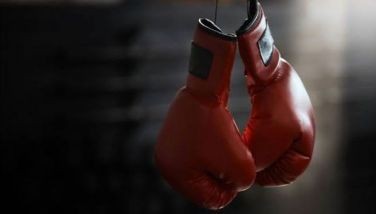Lifeblood of new science is a breath of foul air
May 25, 2006 | 12:00am
Your breath may tell the world what you ate for lunch or that you had too many margaritas to wash it down. But researchers are collaborating on a new, laser-based breath analyzer that can go far beyond that, picking up hidden clues about your health.
"The concept is simple. You can measure in the breath what you measure in the blood," said Dr. Steven Solga, an expert on liver disease at the Johns Hopkins School of Medicine in Baltimore.
Breath tests have long been used to identify drunken drivers. But your breath contains as many as 400 compounds, and many of them can be used to detect diseases and track a patient’s recovery, experts say.
Doctors already use breath samples to monitor patients with asthma, those in intensive care and others recovering after heart transplants.
They are also testing breath-based diagnostic tools designed to detect breast cancer, lung cancer and tuberculosis.
"Breath is a window of what’s going on in the body normally, what’s going on in the body abnormally and what you’ve been exposed to," said Terence Risby, a researcher at Hopkins’ Bloomberg School of Public Health.
During the past 20 years, Risby has asked 50,000 sick children, organ transplant recipients and patients with a variety of diseases to blow into a tube that deposits their breath into a plastic sack. He has used those breath samples to show that elevated ammonia levels can be a sign of liver and kidney disease, and that increased ethane can signal vitamin deficiencies in children, as well as organ damage after transplants.
He points out that collecting breath samples offers a distinct advantage over the blood test: It doesn’t hurt. "Breath represents a totally innocuous way of collecting a biological sample," he says.
But Risby and colleagues agree that breath-testing technology still needs work. For years they have been using the same basic devices to detect so-called "biomarkers" in the breath – gas chromatographs that separate individual compounds in the air. The problem is that the technology is expensive and results can take days.
Researchers at several universities hope to change that.
The consortium has won a five-year, $15-million grant from the National Science Foundation to find ways to build a cheaper and easier tool that doctors and patients can use. NSF may extend the grant to 10 years and $40 million, the researchers say.
The goal is to develop a relatively low-cost, laser-based device that could be used not only to diagnose diseases, but also to detect pollutants in the air, gaseous emissions from the soil and the presence of nearby explosives and biological weapons.
"What we’re hoping to develop is small, cheap sources that can be used by just about anyone," said Anthony Johnson, a lead investigator who is director of the Center for Advanced Studies in Photonics Research at University of Maryland, Baltimore County.
Specifically, they want a cheap quantum cascade laser, which was developed at Bell Laboratories in 1994 and is used by researchers worldwide.
Current lasers are difficult to use and must be custom-designed for specific researchers, said Claire Gmachi, a professor of electrical engineering at Princeton University who is principal investigator of the NSF project.
To build their lasers, researchers will tightly bundle stacks of thin semiconductor wafers with optical and electrical properties designed to emit light at specific wavelengths. "If you want to look for ammonia, you need one wavelength. If you want to look for nitric oxide, you need another," she said.
The technology is expensive. Commercially produced models cost between $8,000 and $24,000, said John Bruno, chief executive of Maxion Technologies, a Hyattsville, Md. company that sells them.
Maxion, one of several corporate sponsors of the NSF research, has sold about 50 quantum cascade lasers to US defense contractors and other companies. Sponsorship means that in return for an undetermined fee, firms will gain access to the researchers and a potential customer base.
Lasers are devices that emit a highly concentrated beam of light at a prescribed wavelength – but there are many different kinds used for purposes as diverse as surgical tools, gun sights and CD players.
In a quantum cascade laser, Johnson said, the light passes through a medium – such as a breath of air – to a detector. By looking at how much light is transmitted or absorbed at a specific wavelength, researchers can determine the levels of specific compounds in the air mass that the light passed through, he said.
Quantum cascade lasers are the focus of the study because of two major advantages, Johnson said.
They work at room temperature and emit light in the mid-infrared range, which gives them the ability to detect tiny amounts of gases such as ammonia, carbon dioxide, methane and other compounds that can signal disease, environmental hazards and biological weapons.
"Eventually, you would be able to install them in a room somewhere and they’d function like a fire alarm system, putting out a signal if they detect something dangerous in the air," said Johnson, an expert on lasers.
NASA scientists placed a quantum cascade laser on a redesigned spy plane six years ago and took finely tuned measurements of the ozone hole at 70,000 feet above the Earth.
"They’re a dream come true," said Christopher Webster, the atmospheric scientist at the NASA Jet Propulsion Laboratory in Pasadena, California, who conducted the study.
Webster also used a quantum cascade laser to uncover fresh details about the composition of clouds for a study published in Science two years ago. He plans to send one into space to look for signs of life on the red planet as part of the 2009 Mars Science Laboratory Mission.
"It has the potential for the measurement of any gases you want measured at extremely low levels, from sniffing the emissions from the tailpipe of your car to respiration rates of carbon dioxide in hospital patients," Webster said.
Not everyone is convinced that lasers will expand the horizons of breath testing.
"Lasers are always going to be the next big thing. But they never seem to come out as good as you want them to be," said Dr. Michael Phillips, an internist and professor at New York Medical College who has been researching breath biomarkers for 20 years.
Phillips developed Heartsbreath, a supplemental diagnostic tool that won Food and Drug Administration approval in 2004 to measure alkane levels in the breath of heart transplant patients. The tests help determine whether the patients are accepting or rejecting their new hearts.
Phillips is testing similar breath-test technology designed to detect lung cancer, breast cancer and tuberculosis, he said. Much of his work is funded by the National Institutes of Health, he said. — The Baltimore Sun
"The concept is simple. You can measure in the breath what you measure in the blood," said Dr. Steven Solga, an expert on liver disease at the Johns Hopkins School of Medicine in Baltimore.
Breath tests have long been used to identify drunken drivers. But your breath contains as many as 400 compounds, and many of them can be used to detect diseases and track a patient’s recovery, experts say.
Doctors already use breath samples to monitor patients with asthma, those in intensive care and others recovering after heart transplants.
They are also testing breath-based diagnostic tools designed to detect breast cancer, lung cancer and tuberculosis.
"Breath is a window of what’s going on in the body normally, what’s going on in the body abnormally and what you’ve been exposed to," said Terence Risby, a researcher at Hopkins’ Bloomberg School of Public Health.
During the past 20 years, Risby has asked 50,000 sick children, organ transplant recipients and patients with a variety of diseases to blow into a tube that deposits their breath into a plastic sack. He has used those breath samples to show that elevated ammonia levels can be a sign of liver and kidney disease, and that increased ethane can signal vitamin deficiencies in children, as well as organ damage after transplants.
He points out that collecting breath samples offers a distinct advantage over the blood test: It doesn’t hurt. "Breath represents a totally innocuous way of collecting a biological sample," he says.
But Risby and colleagues agree that breath-testing technology still needs work. For years they have been using the same basic devices to detect so-called "biomarkers" in the breath – gas chromatographs that separate individual compounds in the air. The problem is that the technology is expensive and results can take days.
Researchers at several universities hope to change that.
The consortium has won a five-year, $15-million grant from the National Science Foundation to find ways to build a cheaper and easier tool that doctors and patients can use. NSF may extend the grant to 10 years and $40 million, the researchers say.
The goal is to develop a relatively low-cost, laser-based device that could be used not only to diagnose diseases, but also to detect pollutants in the air, gaseous emissions from the soil and the presence of nearby explosives and biological weapons.
"What we’re hoping to develop is small, cheap sources that can be used by just about anyone," said Anthony Johnson, a lead investigator who is director of the Center for Advanced Studies in Photonics Research at University of Maryland, Baltimore County.
Specifically, they want a cheap quantum cascade laser, which was developed at Bell Laboratories in 1994 and is used by researchers worldwide.
Current lasers are difficult to use and must be custom-designed for specific researchers, said Claire Gmachi, a professor of electrical engineering at Princeton University who is principal investigator of the NSF project.
To build their lasers, researchers will tightly bundle stacks of thin semiconductor wafers with optical and electrical properties designed to emit light at specific wavelengths. "If you want to look for ammonia, you need one wavelength. If you want to look for nitric oxide, you need another," she said.
The technology is expensive. Commercially produced models cost between $8,000 and $24,000, said John Bruno, chief executive of Maxion Technologies, a Hyattsville, Md. company that sells them.
Maxion, one of several corporate sponsors of the NSF research, has sold about 50 quantum cascade lasers to US defense contractors and other companies. Sponsorship means that in return for an undetermined fee, firms will gain access to the researchers and a potential customer base.
Lasers are devices that emit a highly concentrated beam of light at a prescribed wavelength – but there are many different kinds used for purposes as diverse as surgical tools, gun sights and CD players.
In a quantum cascade laser, Johnson said, the light passes through a medium – such as a breath of air – to a detector. By looking at how much light is transmitted or absorbed at a specific wavelength, researchers can determine the levels of specific compounds in the air mass that the light passed through, he said.
Quantum cascade lasers are the focus of the study because of two major advantages, Johnson said.
They work at room temperature and emit light in the mid-infrared range, which gives them the ability to detect tiny amounts of gases such as ammonia, carbon dioxide, methane and other compounds that can signal disease, environmental hazards and biological weapons.
"Eventually, you would be able to install them in a room somewhere and they’d function like a fire alarm system, putting out a signal if they detect something dangerous in the air," said Johnson, an expert on lasers.
NASA scientists placed a quantum cascade laser on a redesigned spy plane six years ago and took finely tuned measurements of the ozone hole at 70,000 feet above the Earth.
"They’re a dream come true," said Christopher Webster, the atmospheric scientist at the NASA Jet Propulsion Laboratory in Pasadena, California, who conducted the study.
Webster also used a quantum cascade laser to uncover fresh details about the composition of clouds for a study published in Science two years ago. He plans to send one into space to look for signs of life on the red planet as part of the 2009 Mars Science Laboratory Mission.
"It has the potential for the measurement of any gases you want measured at extremely low levels, from sniffing the emissions from the tailpipe of your car to respiration rates of carbon dioxide in hospital patients," Webster said.
Not everyone is convinced that lasers will expand the horizons of breath testing.
"Lasers are always going to be the next big thing. But they never seem to come out as good as you want them to be," said Dr. Michael Phillips, an internist and professor at New York Medical College who has been researching breath biomarkers for 20 years.
Phillips developed Heartsbreath, a supplemental diagnostic tool that won Food and Drug Administration approval in 2004 to measure alkane levels in the breath of heart transplant patients. The tests help determine whether the patients are accepting or rejecting their new hearts.
Phillips is testing similar breath-test technology designed to detect lung cancer, breast cancer and tuberculosis, he said. Much of his work is funded by the National Institutes of Health, he said. — The Baltimore Sun
BrandSpace Articles
<
>
- Latest
Latest
Latest
October 14, 2024 - 11:00am
October 14, 2024 - 11:00am
October 11, 2024 - 12:49pm
October 11, 2024 - 12:49pm
September 30, 2024 - 8:00am
September 30, 2024 - 8:00am
September 26, 2024 - 2:00pm
September 26, 2024 - 2:00pm
September 3, 2024 - 1:00pm
September 3, 2024 - 1:00pm
Recommended





























